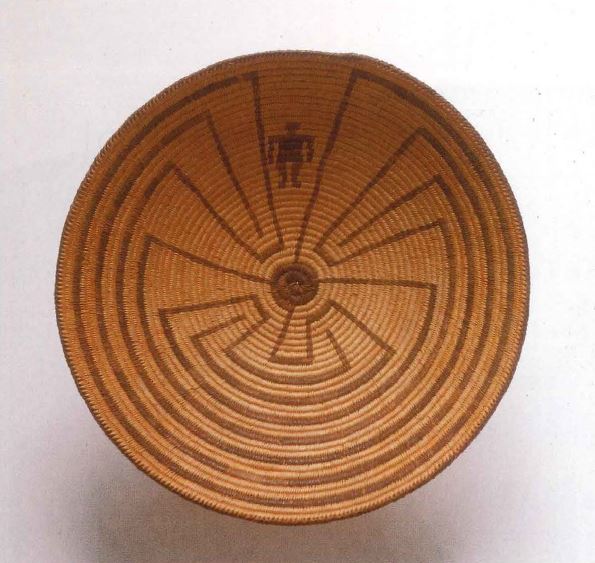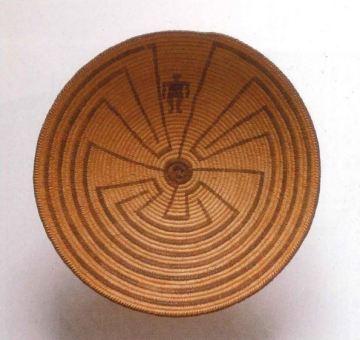
This article originally appeared in the July/August 2013 edition of Museum magazine.
Native museums face sustainability challenges but lead the way.
The majority of today’s Native American museums are relatively young organizations working to bring cultural and archival treasures into their own control and to their communities for the first time. Despite relatively consistent flows of gaming revenue into tribal accounts, these museums face many sustainability challenges that may be unfamiliar to mainstream institutions. But the solutions we adopt can provide a model for a diverse range of museums and their traditional and modern constituencies.
One of our most significant struggles is catching up with the museum world at large, often against all odds. We care for material and archival collections that both accumulated and scattered before we existed. With objects and ideas finally coming together and into our ownership, we are charged with building sustainable alternatives apart from mainstream concepts. Our varied communities acknowledge our success in creating effective services with shoestring methods or using earmarked budgets.
Native museum staff must grapple not only with current economic realities but with our communities’ lingering sense of humiliation and distrust of museums. For many years, specialized mainstream museums collected Native human remains, funerary vessels and sacred objects, thus disturbing the sanctity of ancestral peace. In many cases, these objects were illicitly taken from tribal areas and then disrespectfully displayed in even the most venerated anthropology museums. While Native Americans were being forced into various stages of defeat and oppression, late 19th-century American museums hurried to research and display collectible Native legacies, often juxtaposing the supposed superiority of American culture with Native “primitivism.” Then they justified more artifact seizures by academic and journalistic claims, further bolstered by the mid-20th-century “Vanishing Indian” myth suggesting (with a whispered sigh of relief) that what was left of Native Americans would soon be out of sight and out of mind.
During the late 19th and early 20th centuries, these perceptions were largely expanded into practices of “salvage anthropology” by which researchers entered indigenous communities to record the “vanishing traditions.” They often returned to the ivory tower with a truckload of material culture for the campus museum. Seizure justification claimed that objects could be ideally analyzed in isolation from contexts and best academically interpreted alongside field reports. Native Americans are now realizing that these very objects either belong back in the earth or can help revitalize their culture.

Harsh assimilation measures roughly imposed by federal policy from about 1850 to 1970 left Native groups in a scramble to survive. Many families sought extra income by relying on their traditional skills during consistently hard times, making and selling Native American arts and crafts. Weavers from Southwestern groups, for example, gained attention for their unique methods of creating varied basket designs using desert fibers and radiating natural colors. Over the past 200 years, these astounding storage containers have generated an increasing demand from collectors around the country and the world. Meanwhile, these beautiful baskets largely escaped tribal retention efforts because Native museums didn’t come into existence until relatively recently.
Following about 500 years of imperial domination, forced assimilation and denied agency, indigenous groups are now recapturing lost identities, thus finally reversing the flow of cultural objects out of their homelands and reservations that took place for so many years. Native American museums have grown significantly during the 1980s, through the 1990s and strongly into the new millennium. The Native American Graves and Repatriation Act (NAGPRA) of 1990 has regulated the return of many Native objects to tribal ownership and helped to improve relations between Native Nations and the federal government. Native American artists and curators have been seeking opportunities to create indigenized tribal institutions within their diverse reservation environments,
sensing that interpretations of Native cultures and arts in mainstream museum exhibitions had often been poorly constructed and sometimes distorted by anthropologists or art historians who failed to seek active input from Native communities. Tribal elders felt offended by the blatant misrepresentations that often resulted, and they have not forgotten.
The idea of operating a museum often takes shape when Native nations decide they must take action to retain traditional language, culture, philosophy and disjointed material object bases. But controversy often ensues between planners and traditionalists because the very idea of a museum has betrayed them before. Founders of new tribal museums need the model of established Native museums that are successfully meeting local expectations.
Native community members starting a museum will confront uncharted tribal realities. Our museums are challenged by daily circumstances that are different from those facing many mainstream museums. Physical, mental, digital, cyber and legal infrastructures often must be pioneered from scratch-translated agonizingly from mainstream uses to their new needs. Low-density populations on Native American reservations usually don’t make the cut when wireless service providers conduct their cost-benefit analyses. Dilapidated reservation roadways and signage are compounded by insufficient electronic and electric infrastructures. In addition, there may be power outages, architectural deficiencies, high-volume Border Patrol traffic, open-range animal interference, increasingly unpredictable weather and supersonic boom disruptions from low-altitude practice flights over vast reservation spaces.
Native cultural centers strive to involve both tribal members and tribal governments-often a difficult distinction to make. A tribal museum belongs to both, so who receives precedence and under what circumstances? Consent processes aim to strike a balance. Along similar lines, a fledgling Native museum must handle small, fleeting groups of volunteers and docents, and elected representatives moving in and out of legislative councils.
Despite these struggles, Native museums have successfully joined a larger ethnic movement that enlarges conventional concepts of the museum. While the turn of the 21st century may have ushered in highly styled and nation-branding structures like the Bilbao Guggenheim, we are also seeing institutions that stand within, and for, a new norm of rural resilience. The Native American museum movement has unfurled in contrast to the European museum idea that became popular in the United States during the first half of the 20th century and revolved around the concepts of beauty for beauty’s sake and learning for industrialization’s sake, and in defense of social and ethnic class boundaries. All of these precepts were assigned to protect the power constellations of capitalist Europe and America at the time. The associated senses of idealization, austerity, severance, and individuality didn’t sit well with community-oriented groups of the non-European worlds. In the emerging Native American museum world, for example, it is significant that many institutions place “cultural center” before “museum” in their names. Even if they don’t, their mission statements strongly emphasize community feedback. Our museums more typically echo the Great Library of Alexandria, where objects, scripts, debate, learning, lodging, food, and dance were likely much closer to the human social core than the operations of a noiseless and immaculate, 20th-century, European-style art museum.
Native American museums are about more than just art and beauty. Our museums are collecting, preserving and protecting material culture and archival resources for future generations. Museums provide essential long-term means for social resilience, quality “edutainment” and public ownership building. In helping to rebuild their tribal cultural commonwealths, Native museums provide resources for tribal identity and morality building, self-determined history learning, language and culture retention, mental health, enjoyable education programs and spontaneous creativity. Our museums offer comfort where or when economic situations may look bleak.
As mainstream and Native American museum interests attempt to find common ground, differences continue to emerge between the two groups. The former are suddenly seeking guidance from Natives in how to best treat sensitive materials and topics in terms of cultural correctness; how to arrive at respectful interpretations of Native cultural norms; and how to handle objects and present their various uses, meanings, and anathemas appropriately in exhibitions and cultural programs. These and other cooperative gestures go hand in hand with most mainstream museums’ new commitment to avoiding the museological flaws of the past.
Native museums, on the other hand, may feel misunderstood when mainstream museum interests expect that “old-growth” standards can be sustained just about anywhere. Unfortunately, there is hardly a Native museum around that is not struggling to justify itself in the face of abject reservation poverty, crime, illness, and alienation. What are we doing here while our communities suffer under these conditions? Many of us believe that cultural patrimony deriving from an unwritten past speaks to continuity and cultural dignity, providing a powerful identity resource for Native communities. Native museums align the present in a reflective and respectful way with various cultural pasts, featuring amazingly large and old material legacies. With few Native American media outlets to inspire Native youth with meaningful identity models, our museums can offer a beacon of hope, honoring traditions while nudging next generations towards a varied future. At the pulse of our missions are creative reminders of powerful heritages that are deeply inspiring. In this sense, we appreciate the positive legacy of NAGPRA, other restitution efforts and International Council of Museums (ICOM) initiatives that promote self-regulation, risk prevention, ethics and excellence standards, and the role of museums in communities.
In support of our tribal artists, Native museums must push back against a mainstream art world that can still reject function in favor of pure-art aesthetics. More than a few proponents of “art for art’s sake” still look down upon Native art. Mainstream art museums might resist new approaches, but ethnic museums worldwide are embracing their own concepts in the widest possible cultural contexts. Native American museums blaze exactly that trail and can divert agency, attention, and business from established museums. Our own artistic and material cultures thrive based on “full-life” concepts including traditional wisdom, ecological know-how, religious lore, economics relying on natural energies, locally authentic narratives of truths and skills, and the socio-political philosophies necessary to build modern indigenous identities.
In its inherent resilience, the museum idea has been productively revived to serve increasingly diversifying communities. As Native American museums join this movement, they also can apply sovereignty status to their causes. We must exercise due diligence in defending indigenous patrimony when ongoing cultural and intellectual property assaults threaten access to the rightful material manifestations of our cultures. We must be vigilant in preventing corporate-style lobbying and reactionary power-grab attempts by academic, professional, legal-and even Native interest-groups from undermining recent progress in the Native museum and repatriation fields.
While keeping our guard up, we also advocate for cooperation in Native-Native and Native-mainstream museum relations and among pertinent organizations that help defend repatriation, cultural restitution, measures against source-culture looting, and forces to eradicate illicit art trade with and among museums. Ethnic groups expect their museums and museum organizations to uphold the intent of evolving codes of ethics before actual laws are in place.
NAGPRA has been eyed by ethnic and legislative groups around the world as a model for local adaptations. Native Americans have led the trail in translating the law, creating a now-powerful success story about a unique and permanent Native museum scene in the United States. At the core of this success is not the law itself but the dynamics it stirred for Native groups eager to claim agency for their heritages, ancestral well-being and corrected historical records for themselves, their children and their grandchildren. With so much indigenous authenticity and resilience at stake, the difficulties of re-charting the ancient museum concept seem insignificant. Any group, anywhere in the world, can recreate this universal idea.
Michael Reinschmidt is museum administrator, Tohono O’odham Nation Cultural Center & Museum, Topawa, Arizona.







